Vanda flower, description of orchid, types of variety, care features, reproduction
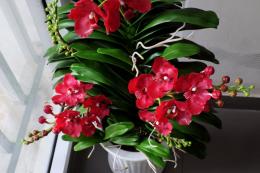
The Vanda orchid is a capricious flower, but all this is more than compensated for by its amazing beauty. Those who managed to grow this amazing plant never regretted the effort and time spent.
Content:
- Vanda flower - origin of the name, description
- Vanda blue, white, other varieties
- What does the Vanda orchid look like in the photo?
- Features of caring for the Vanda orchid
- Reproduction
- Diseases and pests
Vanda flower - origin of the name, description
This is an epiphyte, originally from the Orchid family. In the wild, it is distributed in the northern part of Australia, India, China, Indonesia and the Philippines. Like every variety, this one has a number of features.
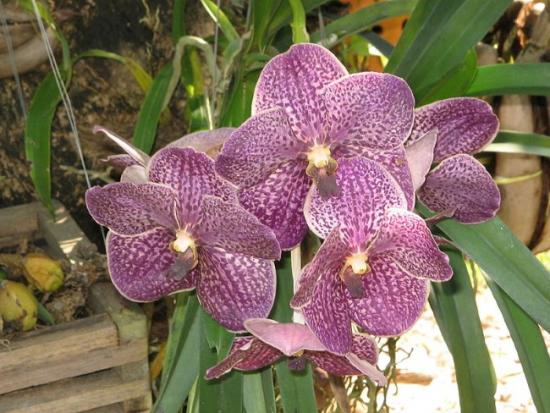
The most notable include:
- A large root system, which is ensured by a dense layer of dead cells, due to which a porous surface of a grayish-green hue is formed. This structure allows the plant to receive the maximum amount of useful micro- and macroelements from the soil, water and air. In addition, porosity provides increased protection of the root from the negative effects of ultraviolet radiation;
- The stem reaches a meter in height, with a sufficient level of nutrients;
- The leaves grow on the stem one opposite the other. The shape of each sheet is elongated. They are hard to the touch, depending on the variety, their colors vary: from green to gray-green;
- The flower stalks are tall and grow from the axils of the leaves. Fifteen buds can bloom on each one. Up to four such stems grow on one plant.
- The color of the petals is different: white, blue, light blue, orange, yellow and others. It is noticeable that immediately after Vanda blooms, the petals are small and pale, but over time they become large in size and gain richness in color.
- The orchid blooms twice a year, for several months. Whether it will bloom at all directly depends on the quality of care and the amount of fertilizer applied.
This amazingly bright orchid bears a sonorous feminine name, which translated means “the grace of God.” According to other sources, it is translated as “fearless”; both options sound attractive.
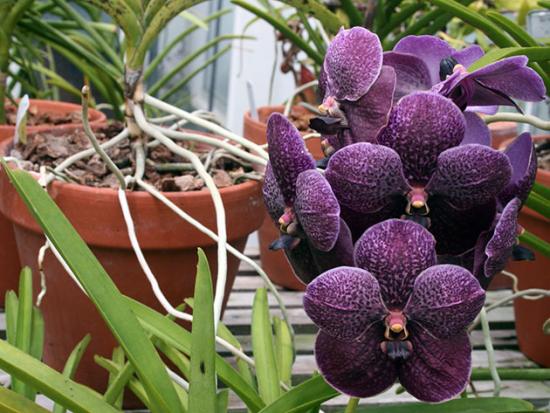
There is a version that the orchid bears a common and very popular name in Poland, which, according to legend, belonged to a mythical queen. But here it should be remembered that this is a fairly common misconception.
In his monograph Asian Studies, William Jones describes this orchid and mentions its name - Vanda. But this is not its own name, this is the name of the plant itself in Sanskrit.
Note that the monograph was published in 1795 and described the Vanda chess plant.
Vanda blue, white, other varieties
In addition to the amazing exotic beauty of the variety, it can be easily recognized by its long and powerful roots of a grayish-green hue. The porous surface of the roots facilitates the absorption of moisture that falls directly on the surface of the root and substrate and the receipt of water from the atmosphere.
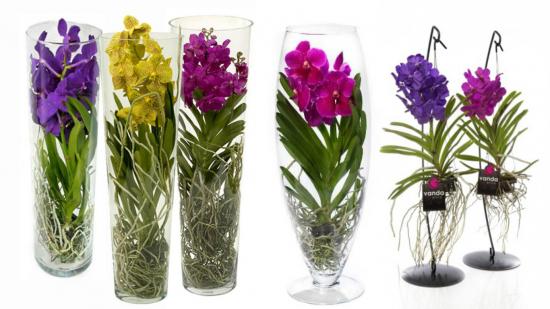
Under one name, a number of subvarieties are united, which differ in color and other botanical characteristics.
The most well-known subvarieties include those indicated in the table.
| White | The size of the plant is small, the leaves do not exceed 35 cm in diameter. The color of the petals and unpretentiousness, in comparison with other subvarieties, make this plant much more in demand than other representatives of the variety. Unlike its relatives, it does not require as much sunlight. The flowers are small in size, collected in racemes located on the peduncle; |
| Valkovataya | It is distinguished by long and highly branched stems and a large number of roots. The leaves are glossy and dense, which determined the name of the subvariety. The average leaf length does not exceed 20 cm; such a plant looks compact and neat. The peduncle is long, bears three to six large buds, the color of which ranges from pink to bright red |
| Blue | It is distinguished by the presence of a larger number of roots and a vertically located stem 50-60 cm long. The average height of the plant is one meter. The castings are dense, leathery, arranged in several rows. Flowers of a lavender hue, sometimes blue or even blue with petals covered with a mesh pattern, are up to 10 cm in diameter. Another distinctive feature of the flower is its subtle, pleasant aroma |
| Sandera | The large orchid is distinguished by elongated leaves that can reach 40 cm in length. The flowers are large, can reach 12 cm in diameter, are located on a peduncle, collected in inflorescences of ten pieces. The buds are pinkish, with a snow-white frame and a red-yellow “lip”. The smell is specific and very pleasant, like other orchids |
There are a large number of different varieties of Vanda, which differ in bud colors and sizes.By visiting a flower shop, everyone can choose exactly the variety that suits their taste.
Even more information about orchids is in the video:
What does the Vanda orchid look like in the photo?
In the photo, this plant, which grows in the wild in the forests of the Near and Far East, looks very distinctive. Long leathery leaves and roots, which often descend from the pot, serve as a kind of cut for delicate flowers of various colors and shades.
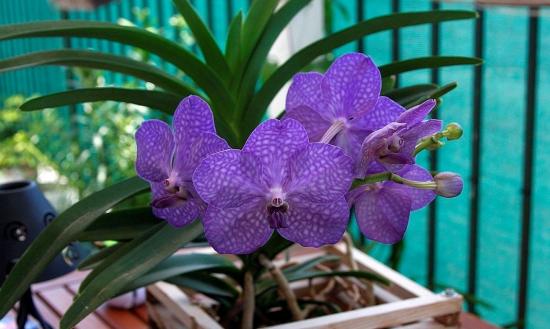
The most famous is the blue one (Vanda coerulea). In the photo, delicate flowers of a light blue hue with blue veins look especially beautiful. They are collected in inflorescences; different species differ in the presence of darker veins, which make up a rather interesting pattern on the petals.
Modern selection methods have made it possible to develop, already in the 21st century, a large number of subvarieties that differ in colors and shades.
A distinctive feature of each of the subvarieties is their amazingly delicate beauty, characteristic of all orchids.
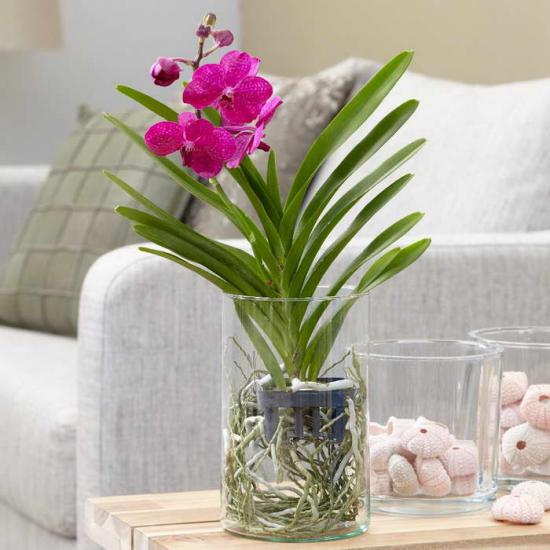
And if an orchid looks amazingly beautiful in a photo, there is no doubt that this is not only the merit of the photographer, the real flower is actually just as beautiful.
Features of caring for the Vanda orchid
Like other members of the family, this variety is very capricious and the slightest failure to follow the rules can lead to the death of the plant.
Therefore, before you start growing Vanda, you should carefully read all the rules and features. You can’t lose sight of more than one detail: no lighting, no soil for planting, no size of the pot.
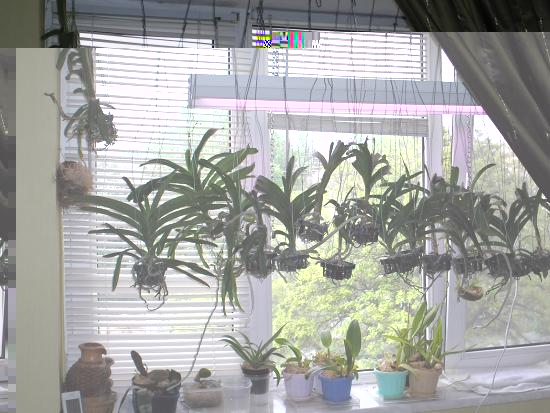
It is important to pay attention to the following points:
- The optimal conditions in which an orchid feels most comfortable are greenhouses.And, if it is not possible to plant it in a greenhouse, it is recommended to provide the most suitable conditions in the apartment;
- Correct selection of soil and container. So, the substrate must be very light and well-permeable to air; a mixture of crushed moss and pine bark is best; river sand, charcoal and perlite should also be added to the composition. The pot should not be too large, but its walls should not restrict the root system. When planting, it is important not to forget about drainage, since orchids do not tolerate stagnant water very well, which can lead to root rot;
- Temperature regime - feels most comfortable within the range of + 18 +28 C. It is important to consider that a drop in temperature below these limits can have an extremely negative impact on the condition of the plant. In addition, it does not tolerate drafts very well, which should be taken into account when placing the pot;
- Humidity should not exceed 60-80%, at a temperature not lower than 18 C. To maintain a suitable level of humidity, you can spray water near the plant, but you must ensure that water spray does not fall directly on the flower petals; only the leaves can be moistened. To maintain the appropriate level of humidity, it will be enough to place a container of water next to the pot. The liquid used for spraying must be heated to a temperature of about +30 C;
- Lighting is one of the most important points that you should pay special attention to, since Wanda is especially demanding about it. However, in summer it is recommended to shade the pot a little and place it on a western window, since solar ultraviolet radiation can cause the development of burns.In winter, the container can be moved to a window facing south, ideally providing the orchid with an additional source of lighting, because in winter there is not enough natural light;
- It is recommended to water during the hot season once every four days, if the plant is placed under a warm shower, then with the obligatory subsequent drying of the leaves. In winter, abundant spraying is practiced; it is carried out no more than once a week. In summer, the procedure can be repeated after 2 days. In the option of immersing the root system in water, watering is done once a week, the duration of immersion is about 15 minutes. Excessive moisture can lead to the development of putrefactive processes in the root system;
- When replanting, it is important to pay special attention to the root system. If damaged or rotten parts are found, it is recommended to remove them. It is recommended to replant after the root has grown sufficiently and it feels cramped in the old pot;
- Applying fertilizers to which the plant is especially demanding. You can select a suitable fertilizer in a specialized store and apply it once every seven days.
Like other orchids, this variety is extremely demanding, and only if all the rules of planting and care are followed, the plant will delight the owner with lush flowering.
Therefore, you should not neglect the rules, because this can lead to the death of the flower.
The secrets of proper care for a wonderful flower are on video:
Reproduction
Despite the capriciousness of the plant, gardeners also grow it at home. The main method of propagation is considered to be seeding by children that appear in the axils of the leaves.
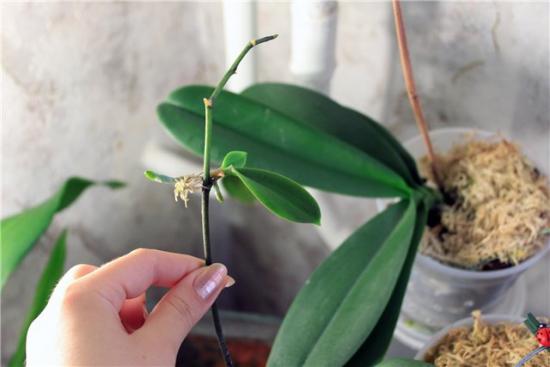
So when seating it is recommended:
- Carefully separate the baby from the mother bush after it reaches at least 5 cm in height.
- It is recommended to treat the cut area with a small amount of activated carbon and dry it, after which the shoot should be placed in special soil for orchids.
- At this time, it is worth caring for the sprouts with special diligence. So you should water the seedlings with a sprayer once every seven days.
- It is worth increasing the amount of incoming water only after the flower begins to grow. In order for Wanda to start growing, it should be placed in a small greenhouse with air humidity of at least 85%.
- After the seedlings grow and reach a height of at least 15 cm, they should be transplanted into a larger pot.
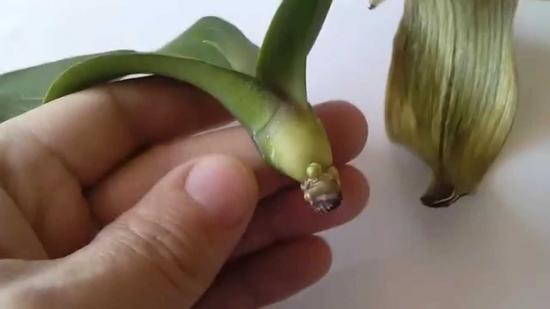
Since babies are produced very rarely at home, you can use another method of propagation - by upper shoots. To do this, it is recommended to separate the upper lateral shoots of the stem.
Moreover, the latter must have aerial roots. The place where the shoots are cut will need to be treated with charcoal and placed in soil, which consists of a mixture of conifer bark, moss and finely chopped parts of fern roots.
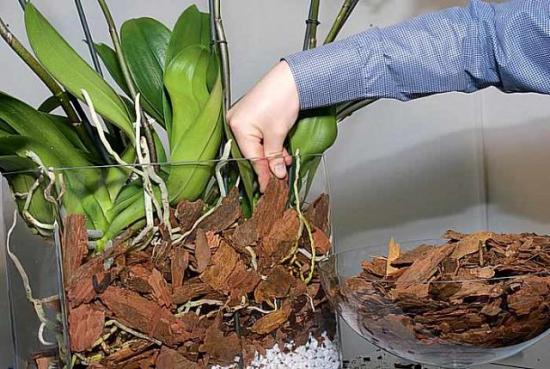
During the first three days, the cuttings need to be watered abundantly, after which the frequency of watering should be sharply reduced to several times a month.
Reproduction at home requires some skill and compliance with all planting and care rules. However, if you really want to, you can grow an orchid at home.
Diseases and pests
A delicate and capricious variety, just like others, very often suffers from attacks by parasites and diseases. Most often it suffers from a fungal disease - fusarium, which affects the leaves and root system.
The disease becomes more active if the rules of care are not followed. This happens especially often with improper watering and lack of sunlight. The susceptibility of a flower to disease increases with the winter temperature drop and the amount of natural light decreasing.
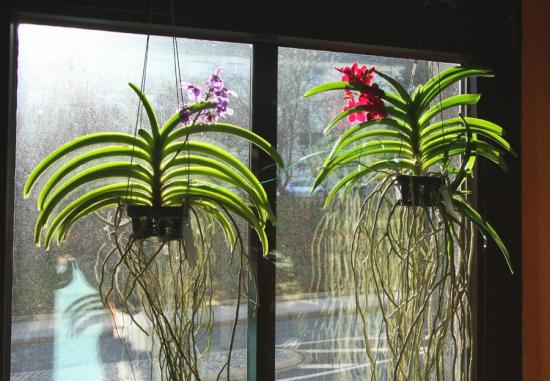
For prevention, it is recommended to cut off all dry or damaged parts, darkened areas of the root. If cracks or cuts appear on the leaf blades, it is recommended to sprinkle them with crushed coal.
It is easy to determine whether a plant is affected by a disease or pest: the leaves of a diseased plant wither, dry out and fall off.
To prevent the disease from spreading to the entire bush, it is recommended to remove the affected part as quickly as possible. It is worth cutting it off with a margin of seven centimeters below the affected plate.
If the root is sufficiently developed and strong, the plant can be saved by simply removing the damaged areas. At the same time, do not forget to treat the cut areas with charcoal. At first, it is important to ensure that no moisture gets on them.
Orchids are extremely delicate plants; because of this feature, they often suffer from attacks by pests (scale insects, mites) and diseases.
If you do not pay attention to a diseased plant in time, the danger of destroying both the diseased flower itself and the entire apartment garden will increase.
The Vanda orchid variety is distinguished among its relatives by its unique delicate beauty, but at the same time it is considered an extremely capricious plant. However, if you follow all the rules of planting and care, it will delight its owners not only with the vigorous greenness of its leaves, but also with the delicate beauty of its buds.

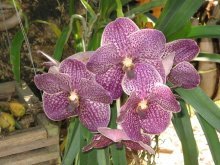
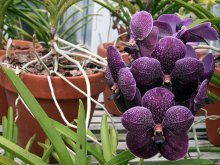

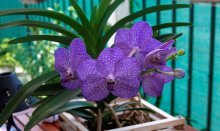
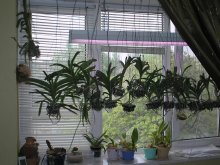
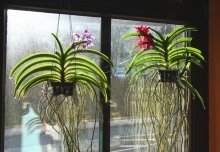
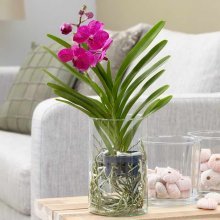
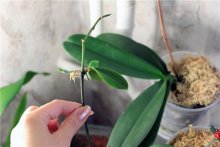
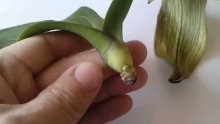
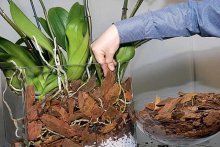
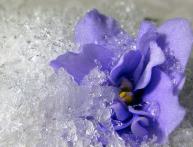
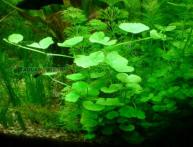
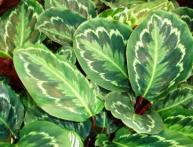
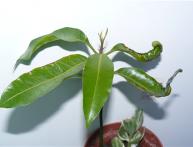
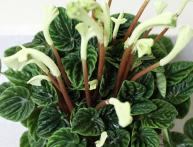

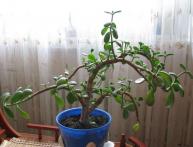
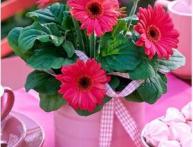
Comments
A very beautiful Vanda plant, but I didn’t quite understand, judging by the photo, do its roots make their way through the pot in which it grows? That is, the pot must have holes in it?
Wanda is beautiful, yes, but she’s not that capricious either. For some. For example, in my case it doesn’t grow at all, but in my sister’s it grows, lives, and blooms magnificently. Moreover, she doesn’t really take care of her.